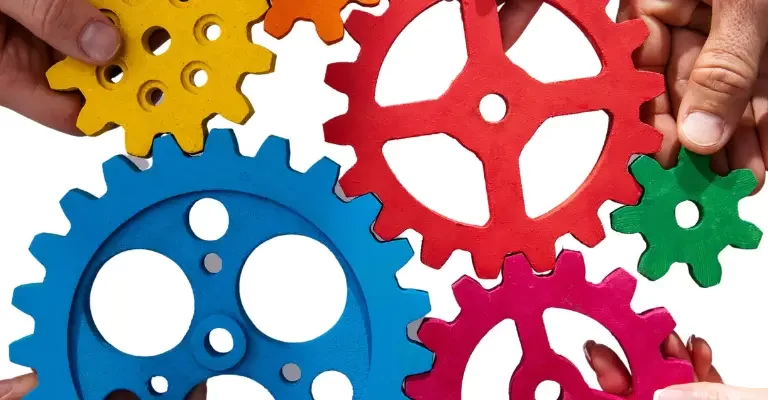A high-performance team culture is built one brick at a time, with trust as the mortar.
A high performance team culture is not something that happens overnight. It is the result of our everyday actions and behaviors, as well as the principles and processes that guide us. When team members feel like they can trust each other and their leaders, they are more likely to be open and honest, take risks, and collaborate effectively. This leads to better decision-making, problem-solving, and innovation.
For a team to operate at a high level we need to ensure our acts and our processes amplify and reflect the following
Nurture Psychological Safety
In a high-performance teams, everyone trusts each other. Team members trust their seniors, and seniors trust the management. This trust allows them to take on more challenging tasks and take calculated risks. When team members try new things, they feel more confident with the support of their seniors. Seniors need to control their fears and let the team members take charge. As this trust grows, team members appreciate the chances they get and become more engaged in their work. It goes beyond the usual expectations.
Clarity on Team’s Goal / Purpose
The next important aspect is having a clear team goal or purpose, which leaders should consistently reinforce with the team, both formally and informally. Every team has specific work to do or objectives to achieve, and the team’s purpose should reflect the real value it brings to the organization, going beyond just a list of KPIs. It should be written and shared with everyone in a clear manner, allowing leaders to check with team members from different angles and dimensions to ensure their understanding and alignment with the team’s objectives. If there are any misunderstandings, leaders should make necessary adjustments to ensure everyone is on the same page.
Clear Expectations for Success
In addition to grasping the Team’s Goal and Purpose, it’s vital for team members to understand what’s expected of them. This includes knowing about key performance indicators (monthly/quarterly KPIs) and specific goals that contribute to the team’s achievements. For each team member, these goals should also include 1-2 aims that encourage them to strive for greater success over time. While these goals might not align exactly with their current tasks, they represent steps towards advancement. This approach helps them visualize their journey, introduces meaningful challenges, and cultivates a culture of growth within the team.

Foster an environment for High Performance
As leaders and managers, it’s crucial to pave the way for team members to excel. This involves providing the necessary tools, facilities, and assistance they require to perform at their best. Similarly, we should identify obstacles or challenges that hinder their optimal performance and work to minimize them. By ensuring these resources are readily available and clearing their path, you empower your team to thrive and reach new heights of success.
Implement Continuous Learning Programs
The importance of continuous training and skill improvement is well understood. This leads to the establishment of programs that support ongoing learning and development within the team. These initiatives are designed to provide team members with dedicated learning time, ensuring they can focus on learning without being overwhelmed by multitasking. Additionally, practical skill assessments and on-the-job feedback are conducted to accurately gauge the impact of these programs. As team members acquire the knowledge and skills needed for their roles, it naturally boosts their motivation to perform even better. Read More here
Leading by Example
Another critical factor is how you, as a leader, behave and act. Words are important, but your behavior as a senior, manager, or team leader speaks volumes to your team. It demonstrates what the right conduct is. You often hear the phrase ‘walk the talk’ or ‘lead by example.’ To establish a culture of high performance within your team, it’s essential that you embody these principles in your daily actions. If you don’t practice what you preach in your day-to-day tasks, your efforts won’t carry the same weight.
Empowering Culture through Recognition
The recognition and praise we extend can deeply influence individuals, inspiring them to uphold their positive behaviors. Although rewards and recognition are standard within organizations, they can sometimes fall into routine and lose their effectiveness. To bolster our high-performance team culture, it’s crucial to promptly acknowledge instances where someone displays the desired behavior. This acknowledgment doesn’t need to be reserved for major accomplishments; even small actions matter. Instead of elaborate rewards, simple gestures like words of praise, a round of applause, or a friendly pat on the back suffice. Just as Ken Blanchard succinctly phrases it, ‘catching people doing something right.
Leveraging feedback as a tool
When we use feedback the right way, it becomes a powerful tool to guide individuals and pace their growth as strong team members. To make feedback effective, it should be based on real data, not just general thoughts. We should have feedback sessions regularly with team members and give them honest feedback based on captured facts. This helps us correct behaviors on time and also encourages team members to move in the right direction aligned with our high performance team culture
Dependability
Reliability and accountability are the cornerstones of a trustworthy team. While there might be competition among team members for performance, promotions, and raises, a high-performing team also entails mutual support. This involves backing each other in challenging situations and simultaneously maintaining accountability for any shortcomings, while offering constructive feedback for growth. When team members can truly depend on each other, it cultivates trust and boosts high performance.
Fostering Team Pride

Lastly, let’s talk about feeling proud of what the team does. It’s a big deal. When the team feels good about their work, it really matters. This feeling of accomplishment satisfies an important human need. When team members can see the positive outcomes of their efforts, it boosts their interest, motivation, and excitement in what they’re doing. This inner reward pushes them to put even more effort into their tasks, making the team more lively and productive.
Conclusion
Crafting a high-performing team culture entails ensuring the aforementioned factors. It’s important to recognize that this process demands time and persistence. There may be instances where things don’t go as planned, prompting the need for consistent review, introspection, and reiteration. It’s crucial to understand that these principles can’t be conveyed solely once a year or every six months; they must be woven into our actions consistently. Mistakes might occur, and not every aspect may align perfectly, yet over time, ongoing dedication will cover all aspects. As the culture takes root, it will become self-sustaining and evolve into the norm.
Happy team building !!


